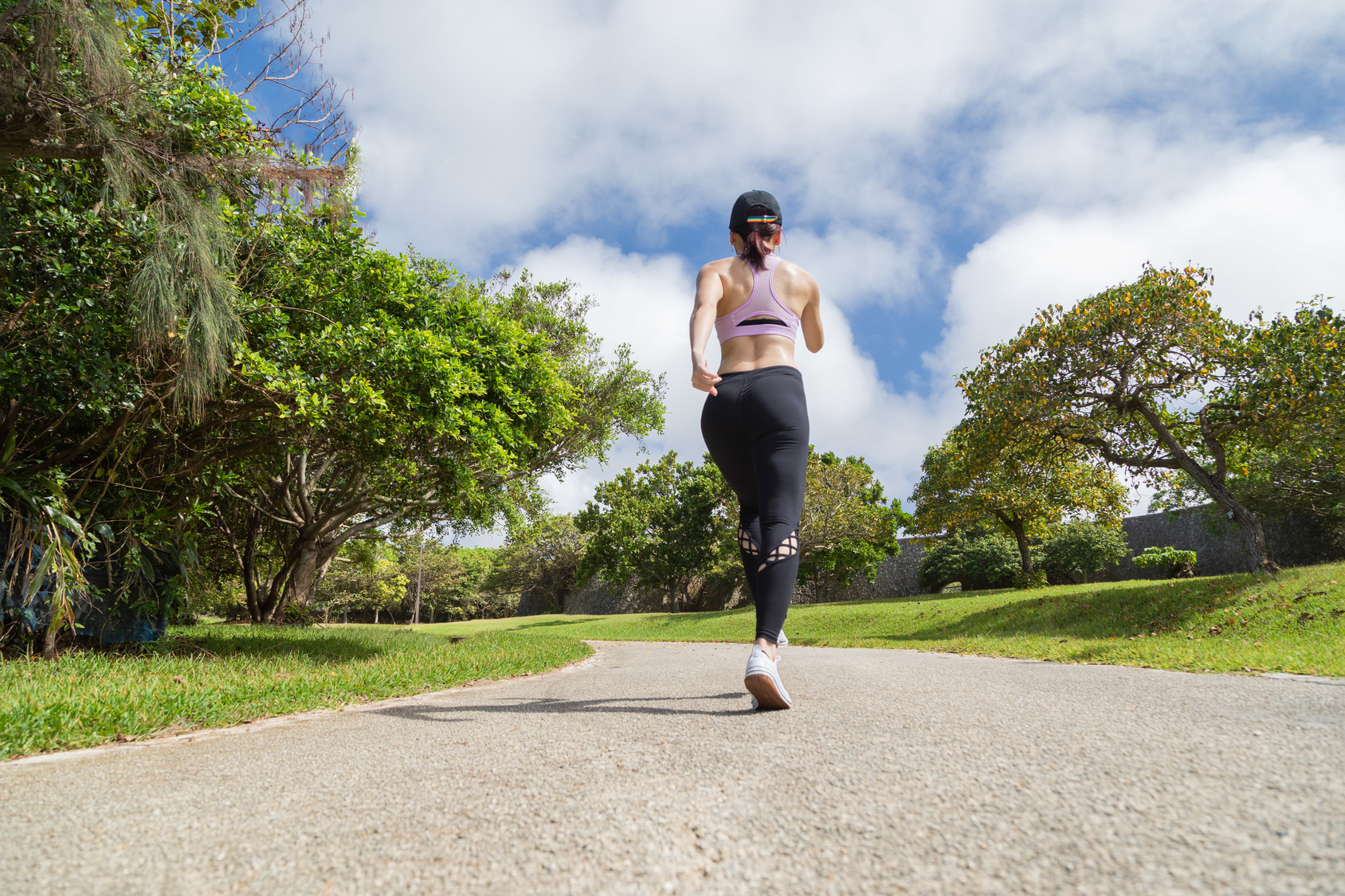Looking for some advice on how to keep running with osteoarthritis?
Then you have come to the right place.
If you’re over 40 and experience chronic pain in one or more of your joints, Arthritis might be to blame.
Many runners assume that having arthritis will spell the end of their running career. But as we’ll see in today’s post, things don’t have to end that way.
Here’s the truth.
Osteoarthritis, especially of the knee, doesn’t have to stop you.
In fact, following a running plan when you have Arthritis might invigorate your life rather than make your condition worse.
In this article, I’ll explain what you should know about running with osteoarthritis and how to protect your knees while logging the miles so you can train safely and pain-free.
What Is Arthritis?
The term arthritis comes from The Greek arthron, which means “joint, ” and it is, the commonly used suffix that means inflammation.
In other words, Arthritis is an inflammation of the joint(s).
More specifically, it’s a joint disease that breaks down the cartilage and the underlying bone over time, and it strikes virtually every joint. This, in turn, results in reduced shock absorption and joint stiffness.
Although it might not be painful early on, the progression of Arthritis can result in an increase in pain and a drop in function. There are over 100 different forms of Arthritis that affect both young and older people.
Some of the most common ones include:
Osteoarthritis, or the degenerative type
Gouty Arthritis, or the metabolic type
Rheumatoid,
ankylosing spondylitis, psoriatic, or the inflammatory type
Infectious Arthritis
In today’s article, I’ll mainly focus on osteoarthritis, or the “wear and tear” of the knee’s cartilage, which is the most common.
Osteoarthritis, or O.A. for short, is a chronic condition that causes the joints to become stiff and painful. The affected structure is the protective cartilage that covers the joint surface.
When you’ve osteoarthritis, the cartilage, the spongy, impact-absorbing tissue around the joint, breaks down over time and the strictures around it can become damaged.
Getting diagnosed with knee arthritis is hard for anyone. Still, if you’ve been around the running block for a while and are used to challenging yourself, it can be particularly devastating.
Contrary to popular belief, people of all ages and body types are prone to developing some form of Arthritis.
In fact, a longitudinal study reported that one in four individuals might suffer a form of Arthritis after studying over 3,000 subjects.
Additional guide – Running With Seasonal Allergies
How to Know if You’ve Osteoarthritis
It can be easy to assume it’s Arthritis whenever you suffer from chronic knee pain at any relatively ”older” age. However, knee pain doesn’t always inherently mean Arthritis—regardless of age.
There are many culprits behind knee pain—especially if you run a lot—that include quad tendon issues, patellar tendon inflammation, ITBS, and faulty knee biomechanics…just to name a few.
So don’t jump to conclusions.
To make sure you do have O.A., I’d urge you to consult a specialist who can perform proper testing and imaging for an accurate diagnosis of your knee health.
Once you have got a positive diagnosis (I know, nothing positive about that, right?), then and then should you move on to step 2.
If you get diagnosed with anything other than Arthritis, then your next step is to consult a physiotherapist who can help you overcome the root cause of your condition.
Additional Resource – Your Guide to Groin Strains While Running
The Main Red Flags
Overall, there are four main signs of osteoarthritis, and you might suffer from one or all of them in one or more joints.
The four key main symptoms are:
- Pain
- Stiffness
- Swelling
- Difficulty with joint mobility
The Risk Factors
So what’s the biggest risk factor for developing O.A.?
According to research, age is. The human body functions the same way as a car. The more miles you log on the joint, the higher the risk for wear and tear, therefore, more damage.
Your parents are also to blame. Plenty of studies have reported that having a history of O.A. in your family puts you in the high-risk category, whether you’re a runner or not.
Other risk factors for Arthritis include
- Obesity
- Sedentary lifestyle
- Gender (women at higher risk than men)
- Smoking
- Injury or overuse
- Joint stress
Additional resource – Labral tears in runners

Can Running Cause Osteoarthritis?
The answer is no!
Running on healthy knees doesn’t cause osteoarthritis. Your knee joint is built to last more than one lifetime
Runners, and athletes overall, are at a lower risk of developing osteoarthritis than the average, non-trained person.
Of course, don’t take my word for it.
Research reported that runners who long between 10 to 20 miles per week have a reduced risk of osteoarthritis in the knee and hip.
Further research has found that only 3.5 percent of recreational runners develop osteoarthritis compared to around 10 percent of sedentary individuals.
What’s more?
Research by Bosomworth assessed the benefits of exercise for knees with osteoarthritis and reported a decrease in pain and an improvement in physical function in the runners who participated in the study.
Another research by Horga analyzed the impact of marathon training on the knees. In the end, the researchers found improvements in knee function and health after completing a marathon training program and subsequent events.
So how come runners are at a lower risk?
Many reasons.
The reduced risk may boil down to the bone having to adapt to the repetitive stress endured while running.
Over time, a bone will usually remodel itself to resist a specific load. In the process, a bone may get stronger, getting adapted to the loads placed on it while logging the miles. As you can tell, this could likely reduce the risk for O.A. over time.
What’s more?
Running regularly helps manage body weight and improve body composition. As I have stated earlier, obesity is of the biggest risk factors for the condition due to the additional stress placed on the joints—not just the knees.
For more research and science behind the impact of running on your knees, please check the following pages:
Additional Resource – Running with Hemorrhoids
Can you Run with Knee Osteoarthritis?
Yes, absolutely. It’s a common misconception that running is bad for your knees.
A recent study that followed participants with arthritis in their knees over a 4 year period found that running did not make their arthritis symptoms worse and it also didn’t increase the signs of arthritis seen on x-ray.
In fact, the participants in the study found that running helped their knee pain.
Another study that followed runners and non runners over an 18 year period also found that the runners did not show more signs of arthritis in their knees compared to the control group of non runners.
Yes, you actually can. It’s a common myth that running is bad for the knee.
Again don’t take my word for it.
Study followed individuals with knee arthritis over four years and reported that running didn’t make their symptoms worse. It also didn’t cause an increase in signs of Arthritis seen on an X-ray.
Instead, the subjects reported that logging the miles helped their knee pain.
Another research that studied runners and non-runners over 18 years reported the running group didn’t experience any arthritis symptoms in their knees compared to the control group of non-runners.
Additional resource – your guide to running with metatarsalgia
Does Running Make Arthritis Worse?
Though logging the miles doesn’t actually cause O.A., you might have some worries if you already have the condition.
So does running make Arthritis worse?
The answer isn’t black or white and largely depends on you and the severity of your Arthritis.
Some experts advise against running when you have Arthritis, especially for those whose knees have been severely damaged by Arthritis or already have had knee surgery.
But, be aware that some research has suggested that running actually improves Arthritis symptoms.
One example is this study that reported that running neither worsens arthritis pain nor damages arthritic knees.
What’s more?
Research has shown that regular exercise, such as running, has been found to reduce total body inflammation, therefore, reduce arthritis risk.
Additional resource – CBD for runners
How To Run Safely With Osteoarthritis
Here are a few tips to get started—or keep going—with running with osteoathritis.
Enjoy
Start Slow
Picking up running for the first time? First, give your body enough time to adapt to the new stresses that go through your muscles, joints, bones, and ligaments.
This doesn’t happen overnight, but every time your feet hit the ground, it triggers your cartilage, bones, and muscles to grow stronger.
Your main goal is to run—and exercise—with the least amount of knee pain possible. Build up to it.
The older you’re, the longer it will take you to adapt.
Osteoarthrosis is like getting wrinkles—a part of the normal aging process in the body.
In general, how well—or bad—your joint age is mainly affected by your genetics, body weight, diet, and previous injuries that you might have sustained in the past.
When you have knee arthritis, you’ll need to be extra careful when you pick up running for the first time since your joint may take longer to adapt. I’d urge you to follow this walk/run training routine.
Do Strength Training
The stronger the muscles of your lower body, the less impact that goes through your joints and bones while running.
Strength training helps balance your musculature and improve joint stability and mobility. This, in turn, will reduce the wear and tear on your body due to imbalances and weaknesses.
Not only that, lifting weights has been reported to help reduce injury risk in runners of all ages.
Make sure to follow a well-rounded strength-training program, including plenty of exercises that focus on your core, glutes, quadriceps, hamstrings, and calves.
Manage Your Routine
There’s no denying that osteoarthritis can take a toll on the structure of your knee. This may mean that your joints may not be able to endure the same training loads as before when you were healthier and younger.
That’s why I’d urge you to alter your running plan to accommodate your condition.
Set a specific and realistic goal, then set mini-goals along the way that you can achieve as you gradually build your endurance and strength. The rest is just details.
If you’ve been diagnosed with knee arthritis, you’ll have to pay attention to your knees and how they react to training.
Recovery
Recovery days allow your body to adapt to training. That’s why they’re as important as the training itself.
Overall, the fitter and younger you’re, you need less recovery time.
But your body will naturally take longer to recover as you get older. That’s just a part of the aging process that nobody can get away with. I hate to break it to you.
Choose The Right Shoes
Another important piece in managing knee arthritis while trying to run is footwear.
If you want to make running a part of your life, minimize the daily stresses on your knees by wearing proper running shoes.
Some research suggests that the best shoe for reducing knee pain associated with knee arthritis is a flat-soled shoe.
But at the end of the day, it’s up to you and your physiology. You’ll be on the right path if you choose running shoes that match your foot type and running style.
Just remember to try out different models and styles to find which one works the best for you.
As a rule of thumb, pick the pair that feels comfortable from the get-go. For this, you’ll need to find a specialty store that lets you test new footwear on a treadmill or pavement.
Pay Attention To The Pain
This is the golden advice for staying injury-free, whether you already have a pre-existing condition or not.
The general piece of advice is never run through the pain, but what do you do if some amount of pain is a part of your daily life.
Know Your Limits
How many miles will your knee allow you to log without worsening your symptoms?
How much is too much?
By the same token, if you’re training regularly and find that’s only worsening your condition, don’t push it. Instead, I’d recommend trying different exercise plans until you find the ones that work for you.
Whether running, weight lifting, swimming, or biking, exercise is an integral part of a healthy life, but forcing yourself to do something you don’t like is a recipe for disaster.
Start by taking note of your baseline pain, and keep a keen eye on your knees to ensure that pain isn’t getting worse.
If pain increases, scale back on your running and/or take a few days off. Keep a running diary so that you can monitor what you did last time—as in how far and fast you run—and use it to guide your next session.
This is a fantastic way to keep tabs on your progress and be aware of any variables that might be causing you pain.
How to Manage Arthritis Knee Pain
Staying active is a key part of staying strong and healthy, whether you have a chronic condition or not.
But there are a few ways to help you soothe and treat arthritis knee pain.
Note – all things considered, remember to consult with your doctor before any type of new treatment. Not all treatment options are effective and safe for all individuals. Be careful.
Cold Therapy
Cold therapy is a straightforward but effective way to soothe arthritis pain. And it’s especially effective immediately after the following exercise.
You can buy ice packs or make your packs by wrapping frozen or ice vegetables in a towel.
Additional resource – Common running injuries
Medication
OTC painkillers, such as Tylenol and Advil, can help you manage your symptoms, especially on your worst days.
I’d recommend glucosamine supplements, a compound found in both cartilage and shellfish shells, to soothe your arthritis pain.
Physical Therapy
Looking for professional help in dealing with knee arthritis pain? Hiring a physical therapist is a fantastic choice.
The therapist will thoroughly examine your knees and outline a treatment and prevention plan. In most cases, this plan may include a mix of measures, such as exercise, mobility work, stretches, and lifestyle changes.
Injections and Surgery
In severe cases of knee arthritis, knee joint injection can provide much relief.
Depending on the severity and type of your Arthritis, the type and frequency of the injection will vary.
One of these is a Cortisone injection after trying less invasive options.
These injections have been shown to bring instant relief to any patient, but they have downsides.
Most doctors would recommend injections after trying less invasive options and methods.
Last but not least, surgery is the last route, such as partial or tail knee replacement.
You should only consider going under the knife if all of the other treatment options have failed.
Bouncing back from knee surgery often takes weeks or months. During the rehabilitation period, you’ll be working with your physician and physical therapist to strengthen your knee and the muscles around it with hand-picked exercises and a slow return to your normal routine.
Additional guide – When to replace running shoes
Running with Osteoarthritis – The Conclusion
There you have it! If you’re serious about running with osteoarthritis – or any other chronic joint condition – then today’s post should set you off on the right path. The rest is just details.
Please feel free to leave your comments and questions below.
Have a great day.
















